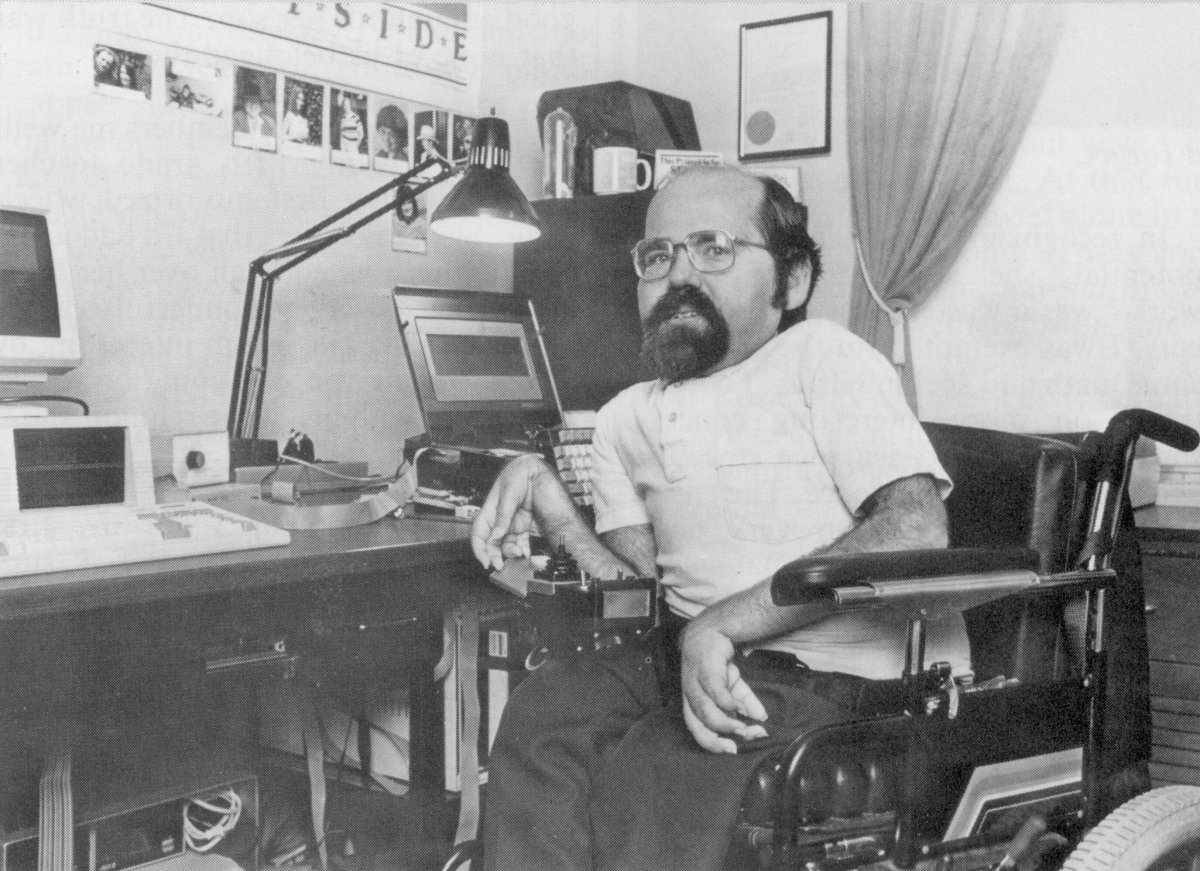When Indianapolis Monthly Magazine published my article “The Reunion” about halfway through the piece there was a sidebar written by staff writer Kelly Shoff. It was a result of separate interviews she did with me and Dr. Charles Bonsett. At the time he was a local researcher working on neuromuscular diseases. Unfortunately much of what this says isn’t true for me. At the time I knew I had some sort of muscular dystrophy and I referred to it in the article as “amytonina congenita” because that’s what I have been told other early age. It turns out I actually have a disease called Spinal Muscular Atrophy, Type 2. The quotes from me, like “The Reunion” article itself, are a bit melancholy or dire in tone. While SMA 2 is a nasty disease that I wouldn’t wish on my worst enemy, I don’t think my attitude towards it is quite as negative as these quotes indicate. Here are some blog posts that talk about my SMA diagnosis, a new treatment that shows promise for children and young adults with SMA, and a basic Q&A about SMA.
- I’ve Got That One. It’s called SMA Type II. And now it finally matters!
- Q & A about Spinal Muscular Atrophy – Celebrating SMA Awareness Month
In the Q&A blog post, there are links to other blog posts and serial posts about life with SMA. Additionally just browse through my entire blog at http://mylife.cyborg5.com/ for more stories about my life with SMA.
The photo below appeared with the sidebar. It shows me sitting in my office in front of my old Kaypro 2000 laptop computer. Another computer probably a Kaypro desktop with 5.25″ floppy drives can be seen just off the left of the image. There was a caption under the image which read “Young, who has triggered his computer to a small control on his wheelchair, operates a computer consulting business from his home.” This quote was obviously not run by me for accuracy. At the time, I would poke at the computer keyboard using a stick in my right hand. There was a wire running from the keyboard to micro switches that I held in my left hand so that I could press control, shift, and alt keys. But none of that was directly connected to my computer.
Here is the sidebar as it originally appeared in Indianapolis Monthly.
Life Sentence
Muscular dystrophy’s slow, steady progression disables the body but not the mind.
For lifelong neuromuscular disease sufferer Chris Young, muscular dystrophy is a silent predator. “Your muscles are its prey,” he says. “You feel weak, but you learn to cope. Then one day something so sudden happens that you can’t move anymore. MD is a terrible disease because you can’t fight it, you just have to adjust.”
Young suffers from amyatonia congentia. Although this disease isn’t a form of muscular dystrophy, its effect, the slow deterioration of muscles, is similar. At age 32, young maintains only minuscule movement in his right hand and requires help from his mother to bathe, shave and dress. “I can turn pages in my books and type on the computer,” says Young, who adapts his equipment for personal and professional use.
MD, which plagues approximately 1000 Hoosiers is caused by a gene mutation. “The defective genes prevent the body from manufacturing the essential substances needed to maintain and fuel the muscles,” says neurologist Dr. Charles A. Bonsett.
in most cases, the defective genes, which are inherited, manifest themselves only in males. “If a woman is a carrier of MD and she has a daughter, the daughter will also be a carrier,” Bonsett says. “But if she has a son, there is a 50% chance that he will have MD.”
MD’s most common form, Duchenne, is also the most severe. Muscle deterioration begins at birth and children often are unable to walk after age 10. The disease progresses from the muscles in the pelvic girdle to the chest and finally to all muscle groups. Patients usually don’t live past 20.
All other forms of MD are much less severe, and many aren’t even diagnosed until after age 25. In these cases the person’s lifespan usually is not dramatically shortened.
The earlier the disease manifests itself, the more rapidly it will progress. One of the telltale signs, flat feet, is apparent at birth. “If one muscle group seems to be impaired there is a good chance that others will be to, “says Bonsett.
Other symptoms, such as walking style, sense of balance and leg strength, can be diagnosed by ages 2 to 5. But because of the clumsiness associated with that age group, symptoms often go undetected. The child with MD will fall frequently, develop a waddling walk, have enlarged calf muscles and find it difficult to climb stairs.
In order to determine if a child has muscular dystrophy, a microscopic evaluation of the muscle tissue is performed. Women can determine if they are carriers by undergoing a blood test.
Because MD is a genetic disorder, there is no cure. The only hope is to find a way to slow its progress.
Bonsett currently is treating eight boys with a special drug designed to slow muscle deterioration. “We have gotten approval from the FDA to use this drug, but it is still in its experimental stages,” he says, explaining that a small insulin pump administers essential enzymes. “Hopefully this will prolong the time that they will be able to still walk until 16 or 17,” he says. “We are proceeding very slowly and cautiously, and maybe we will be able to find a way to slow the destructive effects of MD.” — Kelly Shoff
